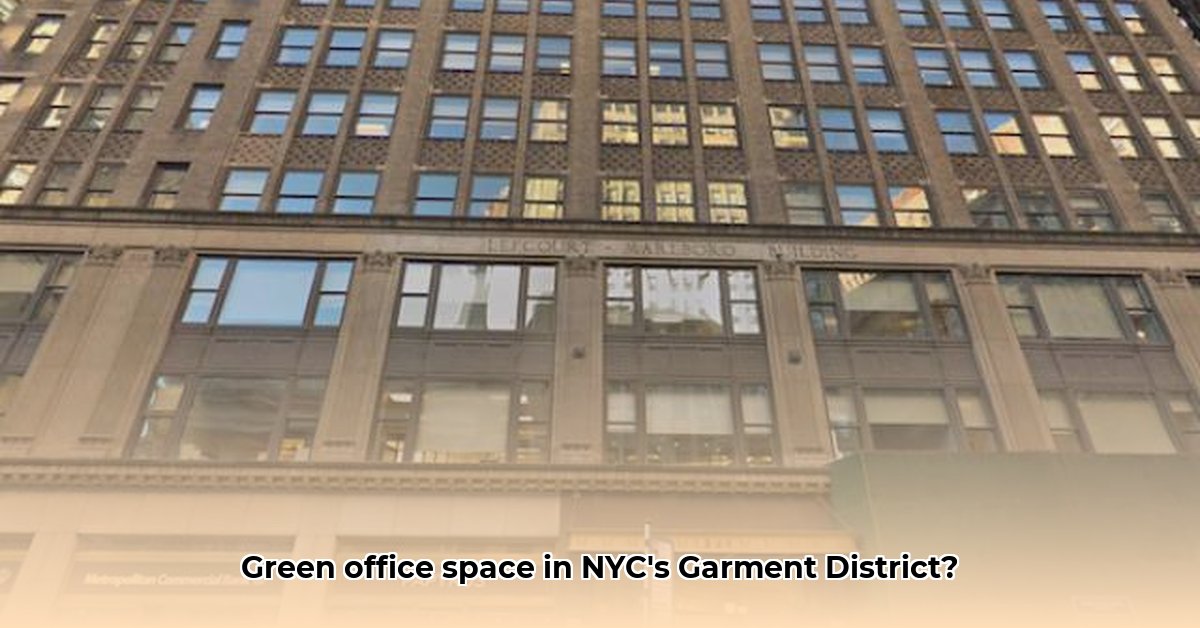
This case study analyzes 1359 Broadway, a 22-story office building in New York City's Garment District, examining its sustainability features, tenant mix, and potential investment value. While some financial data remains unavailable, hindering a complete valuation, the analysis reveals several key strengths and challenges.
Sustainability and Amenities: A Competitive Advantage
1359 Broadway stands out for its commitment to sustainability. Its WELL certification (a globally recognized standard for healthy buildings) and ENERGY STAR award highlight its energy efficiency and commitment to a healthy work environment. These features are increasingly attractive to environmentally conscious businesses and contribute to a premium image. The recently renovated lobby, modern high-speed elevators, and updated HVAC systems enhance the building's appeal and functionality, further strengthening its competitive position. Isn't this a compelling argument for increased tenant satisfaction and retention? The building's location in the vibrant Garment District offers another significant advantage, providing easy access to public transportation and a dynamic urban environment.
Tenant Mix: Diversity and Potential Volatility
The building attracts a diverse range of tenants, including established companies and tech startups. This diversified tenant base reduces reliance on any single industry, mitigating risk during economic downturns. However, discrepancies exist regarding the precise tenant roster, with some sources listing Progyny, Inmar Intelligence, NYSERDA, and Crown Castle, while others mention Ipreo, Sisense, NYSERDA, and SLCE Architects. This lack of transparency necessitates further investigation to accurately determine tenant retention rates and the overall stability of the tenant mix. This uncertainty, however, is a significant hurdle in accurately assessing the building's long-term revenue generation capabilities.
Financial Performance: A Critical Data Gap
A significant limitation of this analysis is the absence of concrete financial data. Information regarding occupancy rates, rental income, and operating expenses remains unavailable. This lack of data prevents a comprehensive assessment of the building's financial health and profitability. Without this crucial information, a precise valuation and a thorough risk assessment are impossible. How can potential investors confidently assess the return on investment (ROI) without access to key financial metrics?
Stakeholder Perspectives: A Multifaceted Analysis
The interests of various stakeholders differ significantly:
Table: 1359 Broadway Stakeholder Considerations
| Stakeholder | Short-Term Goals | Long-Term Goals |
|---|---|---|
| Building Management | Maximize occupancy, enhance tenant satisfaction. | Implement further sustainability initiatives, optimize operational efficiency, enhance building value. |
| Potential Tenants | Evaluate building features, location, and lease terms. | Consider long-term cost savings, ensure work environment aligns with values. |
| Investors | Secure strong financial returns, minimize risk. | Achieve capital appreciation, maximize rental income streams, and maintain a strong market position. |
| Local Government | Promote sustainable development, encourage economic growth. | Support green initiatives, attract high-value businesses. |
Risk Assessment: Mitigating Potential Challenges
Several potential risks warrant consideration:
Table: Risk Assessment Matrix for 1359 Broadway
| Risk Category | Likelihood | Impact | Mitigation Strategy |
|---|---|---|---|
| Tenant Turnover | Moderate | Moderate | Proactive tenant relationship management, competitive lease terms. |
| Market Fluctuations | High | High | Diversified tenant base, robust financial reserves, flexible lease structures. |
| Operational Issues | Low | Moderate | Preventative maintenance programs, emergency response plans. |
| Regulatory Changes | Moderate | High | Continuous monitoring of regulations, prompt compliance. |
| Climate Change Impacts | High | High | Ongoing investment in building resilience and upgrades. |
Regulatory Compliance: Navigating the NYC Landscape
New York City's emphasis on sustainable development presents both opportunities and challenges. 1359 Broadway's existing green features align well with these city policies. However, ongoing monitoring of evolving regulations regarding energy use, waste management, and carbon emissions is crucial for maintaining compliance and avoiding potential penalties.
Conclusion: A Promising Prospect with Data Gaps
1359 Broadway's strong commitment to sustainability, desirable location, and diverse tenant mix are substantial assets. However, the absence of comprehensive financial data significantly limits a conclusive assessment of its investment potential. Further research into occupancy rates, rental income, and operating expenses is essential for a complete evaluation. Despite these data limitations, the building presents a promising case study highlighting the growing importance of sustainability in the NYC commercial real estate market and the multifaceted considerations for various stakeholders. Unlocking access to the missing financial data would drastically improve the clarity and completeness of future assessments.